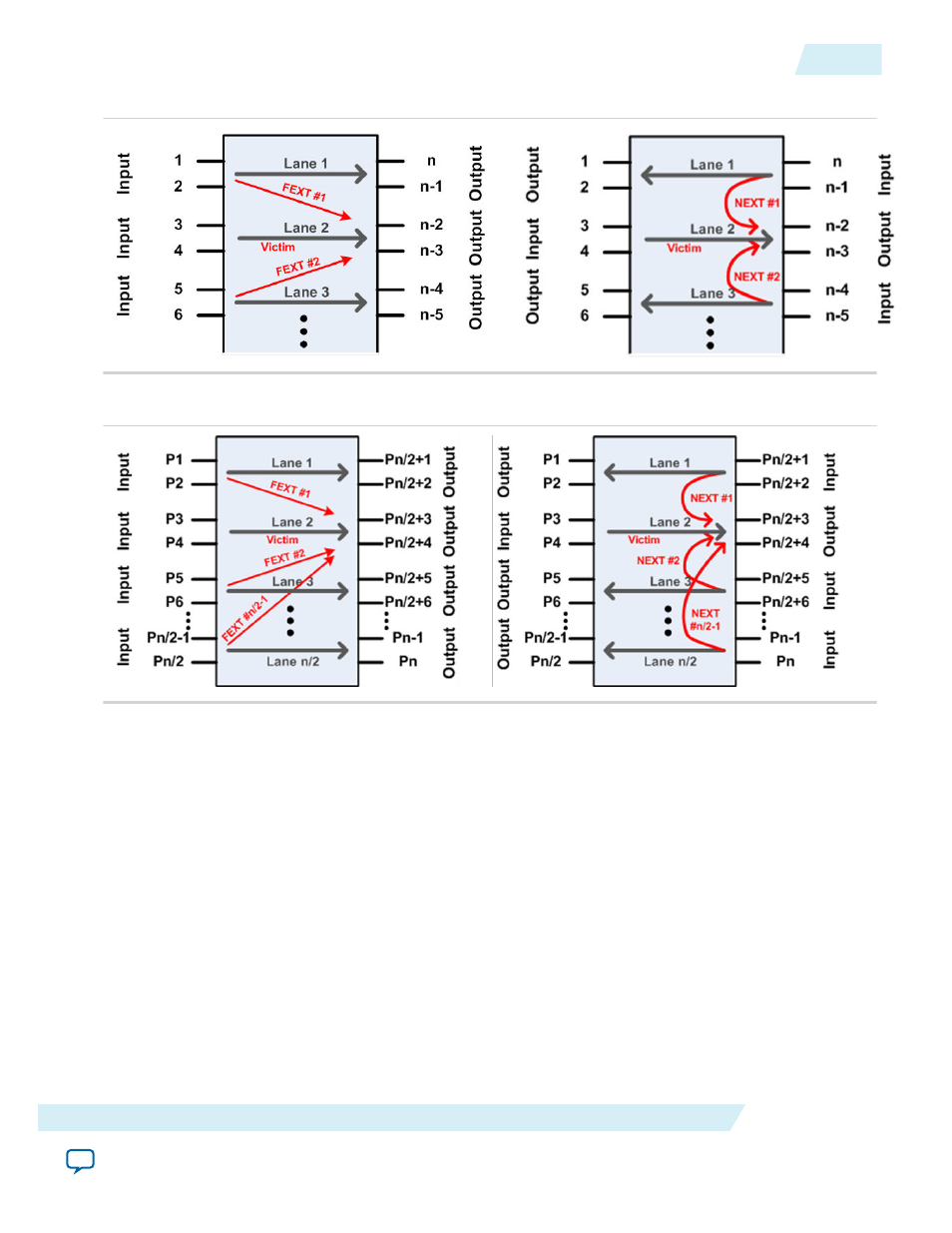Altera JNEye User Manual
Page 109

Figure 2-83: S-parameter with Port Configuration—Type 3
Figure 2-84: S-parameter with Custom Port Configuration
• Lane ID (Lane)—For multiple channel/lane S-parameters (8-port and above) a channel/lane must be
chosen for link simulations. For example, the above figures show a 12-port 3-lane S-parameter. After
loading the channel file, JNEye assigns the middle lane as the default simulating channel (or victim
channel for crosstalk simulations). You can change the Lane ID by using the menu below the Lane ID
list box. For 2-port or 4-port S-parameter models, the Lane ID is ignored.
• Aggressor ID (Agg ID)—For multiple channel/lane S-parameters simulating crosstalk effects, you
must specify the aggressor location. For example, the above figures show four possible crosstalk
configurations from a 12-port S-parameter model. Use the menu below the Aggressor ID list box to
change the aggress location. For Victim channel (Loss type), the Aggressor ID field is ignored.
Note: The Aggressor ID is indexed in a way that excludes the victim lane. For example, in a 12-port S
parameter, there are three lanes. The middle lane (Lane ID 2) is the victim lane. The two
aggressor channels have Aggressor IDs 1 and 2, not 1 and 3.
• Relative Amplitude (Rel Amp)—You can manually adjust the amplitude of crosstalk (NEXT/FEXT)
channel components. The amplitude adjustment is reflected in the channel plots and the channel
compliance results. The amplitude adjustment is in a linear scale.
UG-1146
2015.05.04
Channel List Panel
2-103
Functional Description
Altera Corporation
